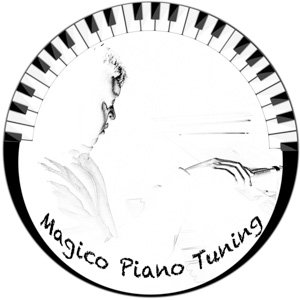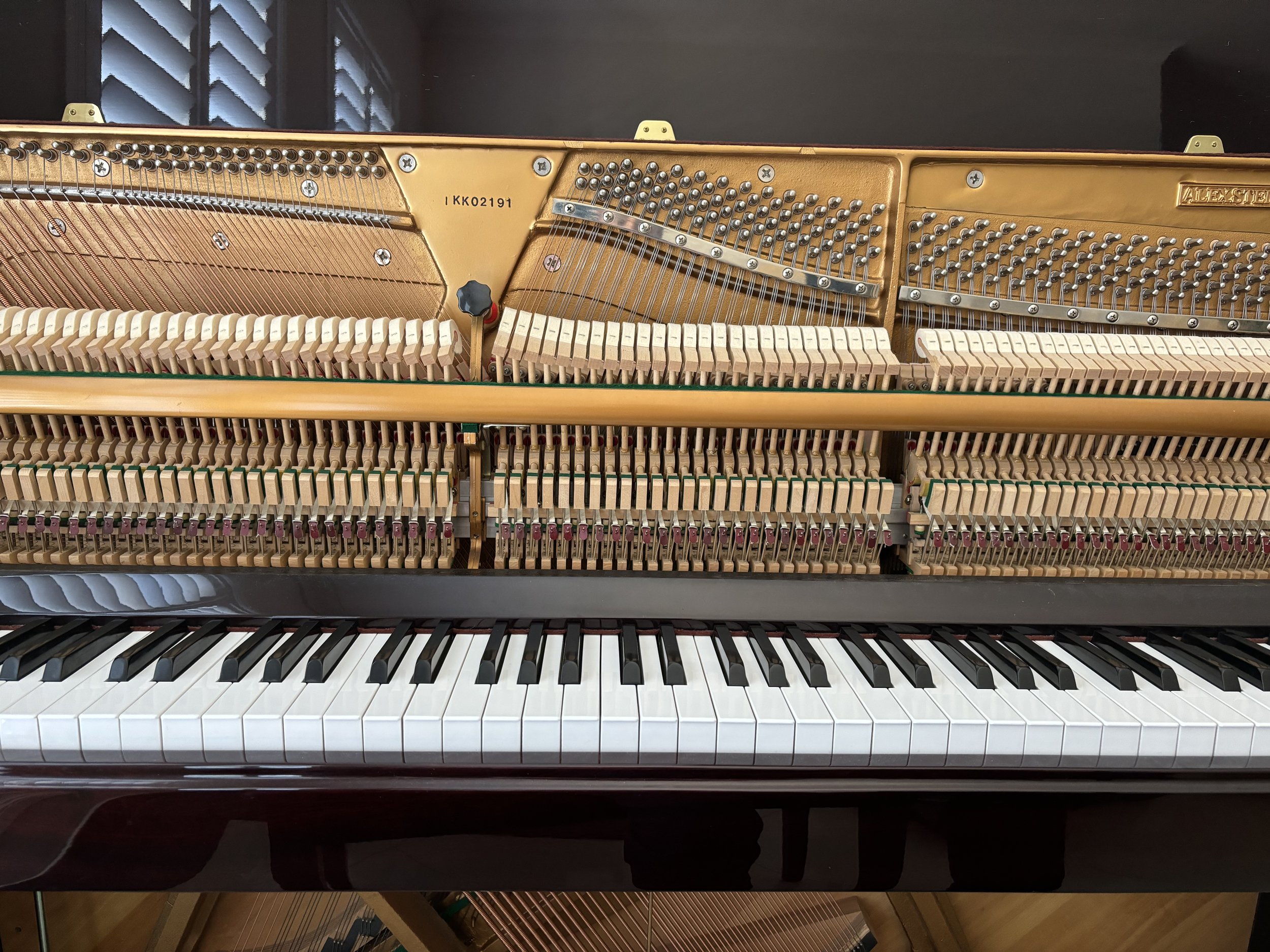Piano Tuning Service
In Greater Sydney That You Can Trust.
Magico Piano Tuning Offers Professional Piano Tuning For Sydney Homes, Schools & Musicians
We are dedicated to providing exceptional piano tuning service to our valued customers. Our piano tuner and technician offer professional piano tuning, repair, voicing and actions regulation services for both upright and grand pianos. We take pride in our commitment to delivering high quality piano services.
Piano Tuning Prices For Upright & Grand Pianos
-
Standard Tuning Every 12 Months-$240/Service
Our Standard Piano Tuning is $240. This is a basic tuning service suitable for regularly tuned pianos. It maintain your piano at concert pitch at 440hz with fine adjustment. We can also tune your piano to any pitch/frequency you desire. For example some musicians prefer 442hz and some singers prefer their piano to be 432hz. A thorough inspection will also be included. We recommend scheduling this service every 12 months.
-
Regular Tuning Every 3 Months-$200/Service
At $200 this is a tuning service designed for brand new pianos for the first 12 months after purchase. It is also suitable for pianos used by music teachers, musicians, recording studio etc.
-
Seasonal Tuning Twice a Year-$220/Service
Pianos are sensitive instruments, vulnerable to the fluctuating environmental conditions. This $220 tuning service works best to help your pianos adapt to Sydney climate.
-
Pitch Raise Tuning As Required-$300/Service
If your piano hasn’t been serviced for years a $300 Pitch Raise Tuning service is necessary. This service will restore your piano to concert pitch at 440hz with fine tuning. An overall health check will also be included to ensure your piano stays in good shape.
-
Aural Tuning
Only for those who understand it to appreciate it. Aural tuning means tuning entire piano by ear, instead of following an electronic tuning device(ETD). Select this service if you prefer the good old fashioned way of tuning your piano. This service is equivalent to our tuning services other than Pitch Raise.
When you practise on a piano that’s out of tune, your brain starts to accept the wrong pitches as “normal.” Over time, this can harm your sense of pitch and make it harder to play in tune—whether on piano or any other instrument.
A beautiful sound inspires you to play more. An out-of-tune piano makes music sound dull, harsh, or sour, which can sap your motivation and make practice feel like a chore instead of a joy. If you’re a beginner or teaching a child, an out-of-tune instrument can make it harder to recognise harmonies, intervals, and correct note relationships—slowing down your learning curve significantly.
Playing on an out-of-tune piano is like training for a race in shoes that don’t fit—you’ll put in the hours but end up with worse results and possibly lasting damage.
Book your piano service today!
Stop Practising On Out Of Tune Piano,Let Magico Piano Tuning Help you
Do You Mind Dogs During Piano tuning?
I am often asked by customers “ Do you mind dogs?” My response is always like “ I am pretty good with dogs.” Indeed I own 2 large breed dogs and love dogs of all sizes and shapes. For most of dogs the reason they bark at the visitors is because they are excited to have someone coming and keen to meet the visitors. If they can’t meet visitors, they bark. Just let them meet me around the piano. Give them a little time most dogs will settle down. Dogs are social animals. They have the ability to adapt and learn in many different environments we live. Many of them absolutely enjoy piano tuning.
Understand Piano tuning cost
A piano is not just an instrument—it’s a long-term investment. Whether it’s a brand-new grand or a cherished upright, neglecting tuning can cause strings and internal components to wear unevenly. Regular tuning keeps the piano in optimal condition, preserving its value and preventing costly repairs down the line. Skipping tuning is like skipping maintenance on a car—you might save money today, but future costs will be far higher.
Pianos are sensitive to humidity and temperature changes, which can stretch or shrink strings. Regular tuning stabilizes the tension in the strings and keeps the piano’s structure healthy. Over time, this reduces the risk of cracks, warped soundboards, or broken strings—saving thousands in potential repairs.
A typical piano tuning might cost $200–$300. Compared to the price of replacing strings, repairing soundboards, or buying a new piano entirely, this is a minor expense. From this point of view the cost of tuning piano is a lot low than cost of repairing piano. Think of tuning as insurance: small, regular investments that protect a much larger asset.
You don’t need magic to make your piano sound good
Regular piano tuning by a dedicated piano tuner is the key
Years ago, I came across an old German Mignon piano—faded, worn, and far from in tune. Was about to find a professional piano tuner, however out of curiosity (and a bit of stubbornness), I decided to bring it back to life myself. Armed with a tuning hammer, borrowed tools, and countless late-night YouTube tutorials, I dove in. What began as a simple DIY repair turned into an obsession with the craft—the delicate mechanics, the satisfying ring of a well-tuned note, the joy of reviving an instrument’s voice. That single project sparked a new path, and before long, I wasn’t just fixing my own piano—I was tuning and repairing pianos for others, one string at a time.
Facts about how to tune a piano?
Why a piano needs tuning? A piano’s strings are under huge tension about 20 tonnes combined. Over time, temperature, humidity, and the natural “creep” of metal and wood cause these strings to stretch or shift, making the pitch drift.Tuning restores each note to its correct pitch so the instrument sounds harmonious. Pitch is how high or low a note sounds. In modern Western music, most instruments are tuned so that the note A4 (above middle C) vibrates at 440 Hz (vibrations per second). This is called A440.Each step up or down in pitch (a semitone) increases or decreases the frequency by the 12th root of 2 (~1.05946), because there are 12 equal steps in an octave.This is called Equal Temperament. Pianos are almost always tuned in equal temperament.That means the octave is divided into 12 equal parts (semitones). Each semitone is slightly adjusted so that all keys sound equally in tune with each other, even though this means each note is slightly imperfect compared to pure mathematical ratios. This compromise allows a piano to play in all keys without sounding “off” in some.
Then here comes the challenge – Inharmonicity. Piano strings aren’t perfectly flexible; they’re stiff. This stiffness causes overtones (harmonics) to be slightly sharper than the ideal. Because of this piano tuners don’t make octaves perfectly doubled in frequency. Instead, they use stretched tuning, making high notes a little sharper and low notes a little flatter than the theoretical perfect pitch. This makes the piano sound more natural to the ear.
Professional piano tuners often follow this process when tuning a piano:
1. Setting the Temperament
• Choose a central section of the piano (often from F3 to F4) and tune it very precisely by ear.
• Start with a reference note (usually A4 at 440 Hz) from a tuning fork or electronic device.
• Then, tune other notes in this range by listening to beats — the pulsing sound you hear when two notes are slightly out of tune.
• Adjust intervals (fourths, fifths, thirds) until the beat rates match the equal temperament pattern.
2. Expanding Outwards
• Once the temperament octave is correct, the piano tuner moves upward and downward, tuning octaves and double octaves.
• Maintain the “stretch” so the piano’s upper and lower registers sound in balance.
3. Unisons. Each note in the middle and upper ranges actually has 2 or 3 strings. They have to sound in the same frequency to be in unison. Tuning unisons is to ensure all strings of the same note are perfectly matched in frequency so they don’t produce a “shimmer” of out-of-tune sound.
Why It’s in reality is harder than it sounds? Each string is under about 70–90 kg of tension. You have to be strong and at the same time delicate because even a tiny movement of the pin changes the pitch noticeably. Adjusting one string slightly affects others nearby due to the shared frame and soundboard. The piano tuner must work with the piano’s natural inharmonicity, not against it. It’s not just “matching a frequency” — it’s balancing the entire instrument so chords sound beautiful across all keys.








